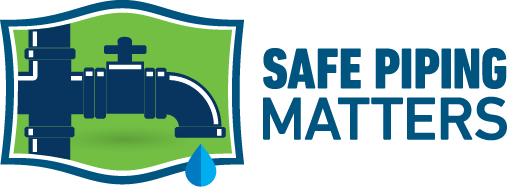Study Highlights Limited Environmental Standards for Leachable Substances into Drinking Water
A new study conducted by Gradient, an environmental and risk sciences consulting firm, examined the chemical composition of six commonly used commercial construction plastic piping materials and identified their leaching potential. A total of 163 substances were identified in these piping materials, of which 74 have limited environmental criteria or standards for monitoring water quality.
The materials are used in a significant range of commercial construction projects, including medical and healthcare, education and government, among other industries.
The plastics studied – polyethylene (PE), cross-linked polyethylene (PEX), high-density polyethylene (HDPE), polypropylene (PP), chlorinated polyvinyl chloride (CPVC), and polyvinyl chloride (PVC) – were all found to contain substances that have the potential to leach into drinking water.
When sorted by piping material, the substances leached from PEX were the most common, followed by PVC and HDPE materials. The substances were also sorted into 38 separate chemical groups:
- Halogenated compounds (mostly man-made substances that are considered an environmental pollutant) and hydrocarbons (the primary ingredient of crude oil) were some of the most common substances reported as having leached from plastic piping, predominantly from CPVC and PVC materials.
- Organotins (a chemical commonly used for pesticides and antifouling paints that’s linked to environmental contamination) are reported as having leached from CPVC and PVC.
- Alkyl phenols (the substance is used in the manufacturing of detergents and are known to disrupt the body’s hormone system and increase the chance of breast cancer) and quinones are all reported as having leached from HDPE, PE, PEX and/or PP materials.
- For other chemicals, clear patterns are not as easily discernible. Aromatic hydrocarbons, phthalates (known to damage the liver, kidneys, lungs and reproductive system), and vinyl compounds, for example, are reported as having leached from a variety of material types.
The research found that, under certain environmental conditions, many substances can leach from commonly-used plastic piping materials into drinking water. Moreover, no environmental guidelines exist for 17 of the 37 substances most frequently identified in plastic piping materials.
Substance leaching from plastic materials can be influenced by several factors such as water quality, pH, sample duration, material age, temperature, and exposure to UV radiation or other gross manipulations. The presence of such substances in drinking water does not necessarily present a health risk. A detailed review and understanding of each water quality criterion is needed before conclusions can be drawn.
These results were originally published in the June 2018 edition of Environmental Science & Engineering Magazine.
